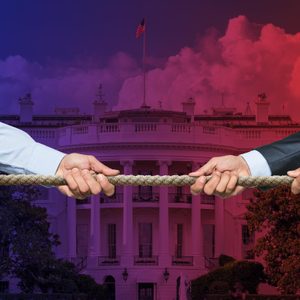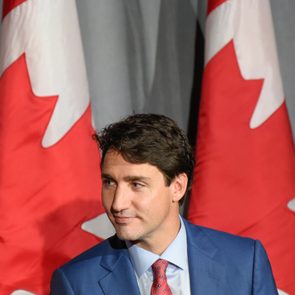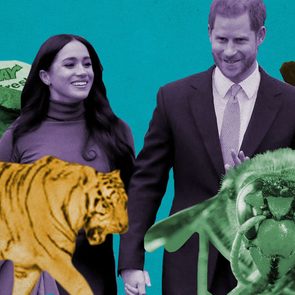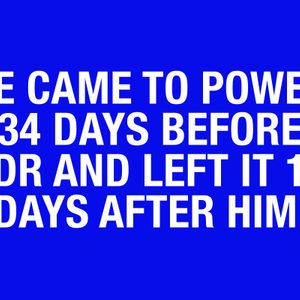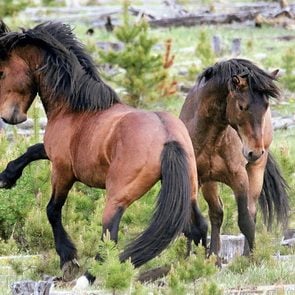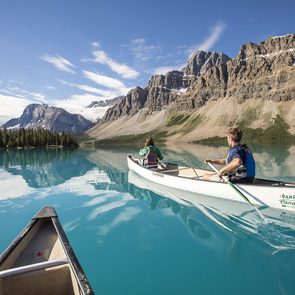Jimmy Carter called the staff at 1600 Pennsylvania Avenue “the glue that holds the house together.” Jackie Kennedy once remarked that a particular chief usher was “the most powerful man in Washington, next to the president.” The impact of the hundreds of men and women who have served as maids, valets, florists and chefs to first families is legendary—and inestimable.
For the workers, the spotlight isn’t the point. Rising at dawn—and sometimes staying awake until the wee hours to perfect pastries and give massages—the residence staff sacrifice their personal lives to serve. Here, their remembrances from inside the White House describe small acts of kindness and episodes of humour, anger and despair—and reveal personal quirks and preferences of presidents and their families from the Kennedy administration to the present day.
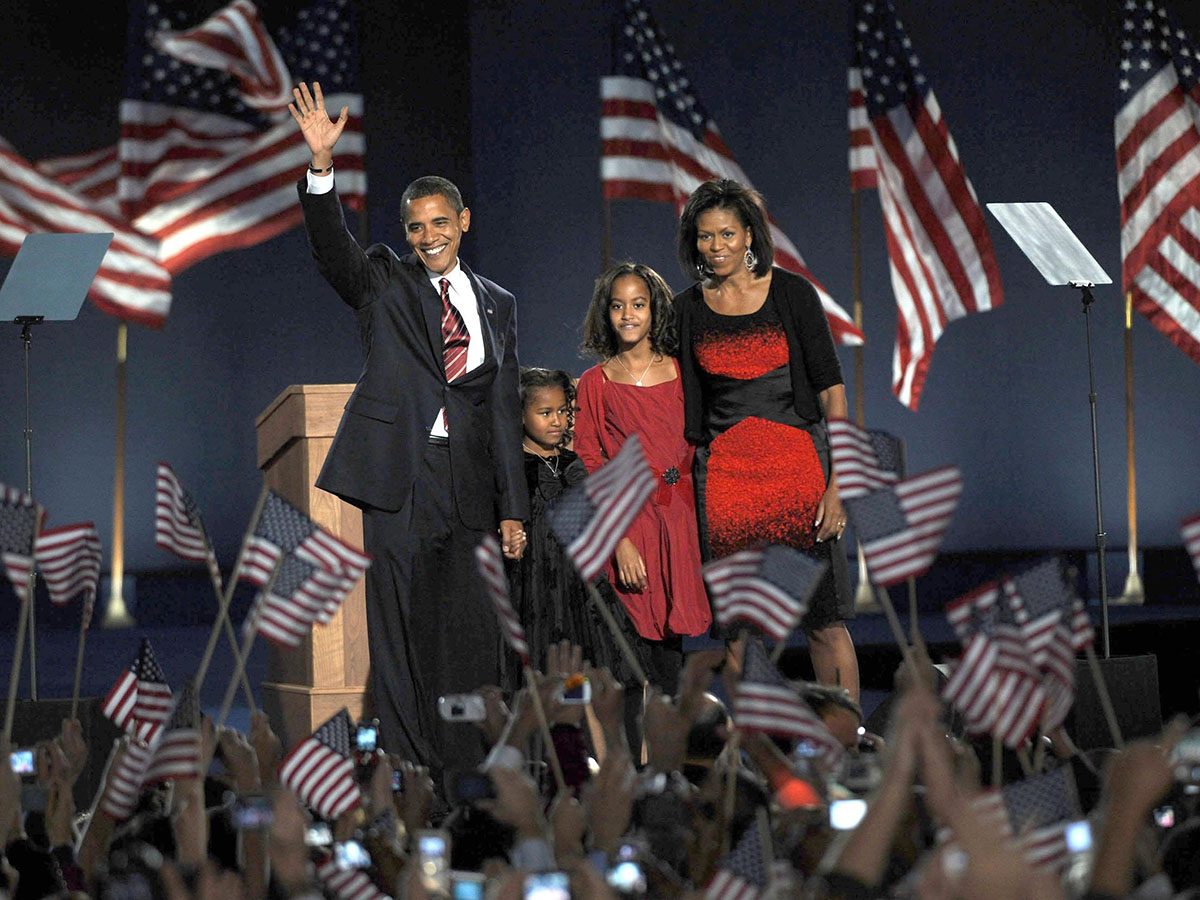
A Present for Malia
Bob Scanlan, the White House assistant chief florist from 1998 to 2010, wanted the Obamas to have a special first Christmas in the White House. He put boxwood Christmas trees on Malia’s dresser and on Sasha’s mantel. When Scanlan went into Malia’s room to check on the tree, he found a note: “Florist: I really like my tree. If it’s not too much to ask, could I please have lights on it? If not, I understand.” Her sign-off was a heart. “Now, you tell me,” he said to the Flower Shop staff. “How could I not put lights on that tree?”
Pastries for Nancy
An incident with Nancy Reagan still haunts former executive pastry chef Roland Mesnier. Two days before an April 1982 state dinner, Mesnier was previewing desserts with the first lady. Mrs. Reagan rejected three options, and Mesnier returned to the kitchen feeling dejected.
“Then the phone rang, and she asked me to come back upstairs to see her,” says Mesnier.
She told Mesnier that she had decided she wanted elaborate sugar baskets with three sugar tulips in each one. He would have to make 15 baskets for the dinner, each of which would take several hours.
“Mrs. Reagan, this is very nice and very beautiful, but I have only two days left until the dinner,” Mesnier told her.
She smiled and tilted her head to the right: “Roland, you have two days and two nights before the dinner.”
Mesnier dug in and worked day and night. After the state dinner, when he knew the first lady was happy with the result, he drove home elated. He had met the challenge.
Ronnie in the Buff
Ivaniz Silva, a maid from 1985 to 2008, spent most of her time in the family’s inner sanctum on the second and third floors. Usually things ran like clockwork, with the maids keeping track of the whereabouts of the president and the first lady so that the staff could go in and work without disturbing them. But one evening, Silva was in President Reagan’s bedroom after 5:30 p.m., turning down the bed and closing the curtains. When she went into the bedroom’s sitting room, “there he was, naked, with papers all around him!” she says. She rushed out of the room blushing before the president had time to say a word. He must have been as surprised as she was.
Later, she passed him in the hallway. Reagan looked at her with a twinkle. “Hey, who was that guy?” he asked.
Flowers for Jimmy
The first family may live in the White House for free, but they’re billed monthly for other expenses such as food and dry cleaning. Jimmy Carter wanted his flowers on the cheap, even though the first family doesn’t usually pay for flowers, says Ronn Payne, a White House florist from 1973 to 1996. “We had to go out and pick flowers for dinners,” he remembers. Payne and other staffers took field trips to Rock Creek Park to pick daffodils and the National Zoo to collect wildflowers. “Police would stop us. One guy was arrested,” Payne says. The White House intervened to get him released.
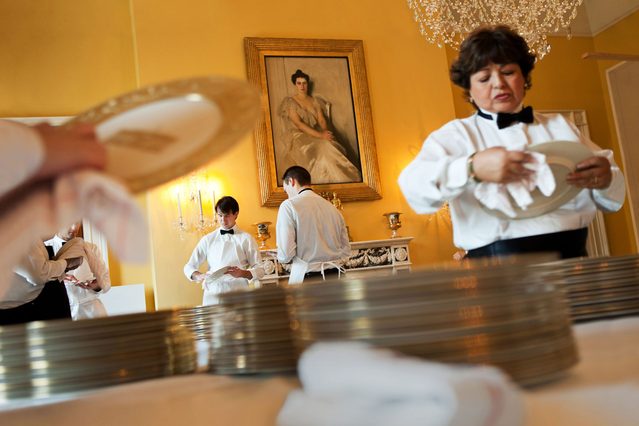
Bowling With Richard
Before Watergate, President Nixon was well liked among the staff, although most of them agree that he and his family were much more formal and stiff than their predecessors. Chef Frank Ruta tells a story about the congenial pot washer Frankie Blair, who was a fixture in the kitchen. One night, Blair was cleaning up after the first family had finished dinner. Nixon wandered into the kitchen, and somehow they started talking about bowling—Nixon was such an avid bowler that he had a single-lane bowling alley installed in the basement under the North Portico. Nixon asked Blair if he would play with him, and the two of them bowled until two in the morning. “There may have been a bottle of Scotch involved as well,” Ruta adds.
After they wrapped up, Blair turned to the president and said, “There is no way my wife is going to believe I was out this late bowling with you.”
“Come with me,” Nixon told him.
The two walked to the Oval Office, where the president wrote a note apologizing to Blair’s wife for keeping him out so late.
Flying with the Nixons
Former usher Nelson Pierce also remembers happy times with the Nixons before Watergate. When Pierce found out that the president and his wife were traveling to the Seattle area, where he’d been born, he told the first lady how much he missed the snowcapped mountains of the Northwest. Not long after that, Mrs. Nixon asked him to join them.
“The president’s secretary gave me the flight map,” Pierce recalls, and he studied it carefully, “trying to figure out what I would see, what I would recognize. But the closer we got to Washington, the less I was seeing.” Then, just as Pierce was getting his bearings, “all of a sudden, we made a sharp bank to the right, and of course I saw Mount Adams, Mount St. Helens, Mount Baker, and Mount Rainier…I knew that somebody had asked the pilots to go that way so I could see the mountains.”
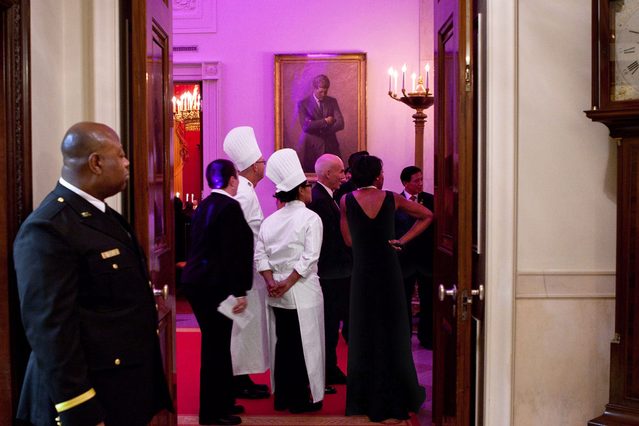
Lyndon’s Massages
Every night, President Lyndon Johnson would get a massage in his living quarters. When former usher Nelson Pierce was on night duty, he would wait downstairs until the Navy chief came to tell him the president had gone to bed, at which point he was free to leave. Every once in a while, Pierce recalls, the president would fall asleep on the table, and the chief would have to sit down and wait until Johnson woke up so he could finish the massage.
“It was three, four, sometimes even five in the morning before we’d leave work,” Pierce says, without a hint of resentment in his voice.
John and the Can Opener
John and Jackie Kennedy were hopeless in the kitchen, says Anne Lincoln, the White House housekeeper at the time. “The president loved soup before he went to bed,” she says. “We had a can opener on the second floor, [but] I think it took him about eight months to learn how to use it.”
Next, learn about the most unconventional presidential pets in history.
A six-time Emmy Award winner, Jeopardy! host Alex Trebek was a beloved fixture in North American pop culture since the game show’s pilot episode aired in 1984. But success wasn’t always a sure thing for Trebek—or these people who made the most money on Jeopardy!.
The Sudbury, Ontario, native bounced around the broadcasting circuit for years before he landed Jeopardy!, and it wasn’t quite the straightforward arrival you’d imagine. Starting out on the Canadian airwaves, Trebek transitioned from the radio to Canadian sports to the American game show circuit. There, he took several gigs throughout the ’70s, including High Rollers, Double Dare, and The $128,000 Question, but none of them really took.
Trebek eventually began hosting Pitfall, a Canadian game show that showcased contestants attempting to cross an eight section bridge in 100 seconds by answering questions, avoiding “pitfalls” along the way. The show’s title should have been a harbinger for Trebek, as Pitfall’s packager, Catalena Productions, went bankrupt in 1982 just a year after he was hired. A $49,200 cheque that Catalena Productions wrote Trebek bounced. Up until his passing on November 8, 2020, he never saw a dime. In spite of this, Trebek kept the cheque, and had it framed to hang on his wall.
“It came at a bad time because my father had died and I was in bad, bad straits and could have used the money,” said Trebek in David Baber’s Television Game Show Hosts: Biographies of 32 Stars. “Interestingly, in a career that spans 45 years, the only time I’ve been done that way was by fellow Canadians. Fellow Canadians shafted me.”
Just two years later, Trebek began hosting another fledgling trivia game show: Jeopardy!. In its second season, the show was paired with Wheel of Fortune (which Trebek also spent a brief period hosting in 1980 when Chuck Woolery fell ill for a week) and aired during a more desirable time slot. With the proper grooming, Jeopardy! bloomed into the colossal hit we all know today, and only a year after airing became the second most-watched syndicated series in the country.
Take a walk down memory lane with this roundup of Alex Trebek’s most memorable moments from Jeopardy!.
Bring your lunch to work. Skip the daily latte. You know how to cut costs on a daily basis, or during particularly money-crunched times. But there are so many other, sneakier ways that expenses can creep on you. Before you do anything, though, it’s time for an attitude adjustment around spending, says Prudential’s financial wellness advocate Amanda Clayman. “We tend to mistakenly think of money in terms of racing toward some future paradise, where all the sacrifice we’ve made will turn into this abundance that we’ll enjoy forever,” she says. “You want to have balance when it comes to saving, where you’re enjoying what feels good to you today but also being mindful of what’s meaningful to you in the future. That way, you’ll feel empowered and not in competition with your future self.”
We asked financial pros for silly, mindless ways we rack up money without realizing it—and simple fixes that will make your wallet grow.
Not playing the interest rate game
If you haven’t shopped for a lower interest rate on your loan in the past 12 months, now’s the time, says Michael Foguth, founder of Foguth Financial Group in Brighton, Michigan. “Interest rates are at all-time lows, and odds are, you can get a lower, fixed-interest rate right now—on your mortgage. I had clients, for example, who purchased a home last year and have already re-financed. They’re saving $100 a month now for the next 30 years. That’s $30,000 saved just with one phone call!” This goes for any loan you may have—car, mortgage, student, or even credit cards. Have debt? Now’s the time to consolidate it, suggests Foguth.
Forking over bank fees
Do you really need overdraft protection? Is your bank charging a monthly maintenance fee? “Remember: Your money should be working for you,” says New York-based debt-relief attorney Leslie Tayne, author of Life & Debt. “I’m amazed that people pay fees for bank accounts. Shop around and let them compete for your business, see if you can get a free checking account, for example. There are a ton of banks out there, don’t think you’re locked into one just because you’ve been a customer for a while, or, if you have been a customer for a while, ask for deals.”
Not being a “list” person
Ever been to the mall for “just a couple of things”? (Yeah, us neither.) A workaround for this common phenomenon, suggests Foguth, is to utilize an online shopping service. “If you have someone shopping for you, you’re not going to have those impulse buys because they’re just sticking to your list. Another option is to use a store’s order pickup service, where they’ll prepare your order and bring it out to your car when you get there so you don’t have to go it.
Frugal shoppers use these tips to save big on groceries.
Spacing out on subscriptions
In the era of autopay, it’s easy to forget about those extra charges that can easily add up. “Automated charges can work against you if you’re not paying attention to them,” says Foguth. “That’s why I advise people to audit their subscriptions on a quarterly basis. Just by going through your credit card statement, you might catch something you wouldn’t normally.” This goes for seasonal charges, too, he says. “I cancel my Peloton subscription in the summertime because I’d rather bike outside, and that saves me $40 a month on something I’m not using,” he says.
Being enticed by zero-interest credit cards
“Zero-interest credit cards are a great way to waste money because you end up paying more in the end as a general rule,” says Foguth. “You may think ‘oh, what a great deal’ but when you don’t pay it off, the interest accumulates. That’s why I suggest that you redline in the calendar somewhere when that introductory rate expires, so you don’t start getting charged without realizing it.” Aim to pay it off in monthly increments before that date.
Not asking for discounts
“I ask for discounts all the time,” laughs Tayne. “Clothing stores. Wine stores. Using Groupon. Finding Facebook groups for deals. More often than not, when I ask if there are any deals or coupons, the salesperson says, ‘oh yeah, I have one.’ So why not ask?” (Here are 11 times you should always haggle for a better price.)
Not checking your phone bill
“You should regularly audit your phone bill,” says Foguth. “Things like paying for extra storage that you may not even realize you signed up for, or apps you forgot you ordered in the first place, can all add up.”
Being over-insured
“You should review your insurance plans every few years,” says Tayne. “Shop around to see if you can get your rates reduced. As you age, as circumstances and rates change, you may find that you can get better rates. Life insurance, for example, is a biggie. I see clients with huge life insurance policies when they’re considerably older, and they’re having trouble paying for their plan. Don’t feel that you’re locked into a particular rate; it’s always a good idea to periodically review your policies.”
Overpriced food and drink
According to a survey by finance-website The Ascent, a branch of The Motley Fool, three of the top ten money-wasters are food-and-drink related. Between the “grab and go” convenience factor of fast-food, paying for overpriced drinks on a summer night, or dining out more often during warmer months when you don’t feel like cooking, for example. Prudential’s financial wellness advocate Tiffany Aliche, aka The Budgetnista, recommends once-weekly no-money days, which will help you pinpoint daily consumption and see where you can cut back.
Having a store credit card
It happens to the best of us: You go clothes shopping and you leave the store with one extra credit card in your wallet thanks to the allure of 15 per cent off the day’s purchases. And so begins the slippery slope of regular, enticing email deals. “There’s no reason to have a card with a store that sends you ‘come shop, come shop’ messages because it encourages impulse buys,” says Tayne. “Some of my clients are reluctant to give up their credit cards because they get really good deals, but the thing is, you’re enticed to go into that store and make that purchase that you normally wouldn’t.”
Check out these money saving tips that don’t work.
Cutting out categories
When you’re trying to save money, it’s common to say “I can’t do brunch this month,” or “no lattes this week.” Clayman suggests to instead focus on a monetary amount rather than cut out a specific category. “This is where I see budgeting fail a lot, because people end up cutting out things that give them pleasure. Instead, if you’re trying to find $100 to put toward savings, and you know you spend $200 a month on meals with friends, just say that you’re going to bring down your food costs by $100 instead. Reduce the habit, don’t eliminate it, and you’ll be more likely to stick with it.”
Not getting to the root of your spending
The more you’re aware of how you use money for emotional reasons, the more you’ll be able to save, says Clayman. “If, for example, you had a rough day at work and are craving companionship to feel replenished, it’s easy to ask a friend for dinner,” she says. “Recognize instead that you have a social need, and look for something once in a while that doesn’t cost money but still fulfills your need for companionship, like taking a walk with your friend. Determining the underlying need is the first step toward making a more sustainable plan to satisfy that need.”
Forgetting to return items
Most of us have it: A pile of “looked good at the time” items that you “keep meaning” to return. It’s common: According to the survey by The Ascent, one of the top ten over-spending habits is forgetting to return items. Set aside a day to return those ill-fitting clothes, unwanted electronics, and other impulse buys you now don’t want or use.
Next, find out the money mistakes that could be costing you thousands.
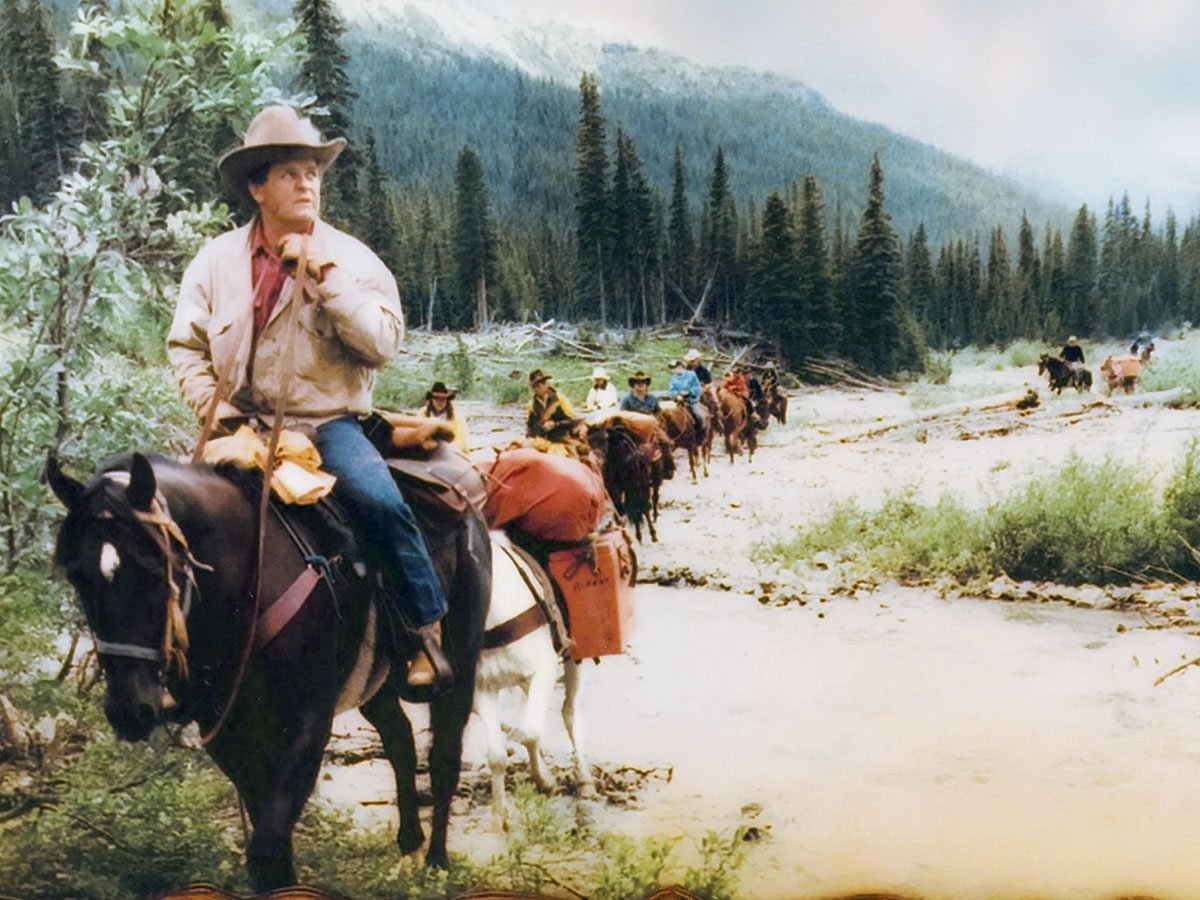
A 10-Day Ride Along Canada’s Great Divide Trail
When my parents retired from their homestead after farming it for umpteen years, they moved to southern British Columbia where the warm weather was a deciding factor. Long before this transpired, my siblings and I had skedaddled off to greener pastures in various places on this planet. The bright city lights lured me away where, over time, I was transformed from a country bumpkin into a city slicker.
After completing a stint overseas, my sister Lena and her husband Neil took over the family homestead. Neil was a funny type of character, loud, brazen and decidedly opinionated! But beneath all his bluster beat a heart of gold.
The Invitation
One day out of the blue, came a phone call inviting me to join a trail ride Neil had planned to cross the Great Divide Trail, via Willmore Wilderness Park in the Canadian Rockies. With some trepidation I accepted, even though I hadn’t been on a horse since I was knee high to a grasshopper.
It was a long drive to meet up with the group, but no sooner had I arrived than Neil gave me a leg up onto the saddle of a handsome-looking gelding named Autumn Leaf. There were 12 riders plus four pack horses, and wouldn’t you know it, I was the only greenhorn in the bunch.
I soon learned to give Autumn Leaf his head and just hang on for dear life as we leapfrogged through muskeg and forged a mighty turbulent river with dangerous undercurrents. I was terrified—how we made it I’ll never know, because I had my eyes squeezed shut the entire crossing. We emptied the water from our boots, wrung out our socks, had a snack and carried on.
Somewhere along the trail, one pack horse had a mind to rid herself of the loaded panniers (baskets) she was carrying. She treated us to a display of saddle bronc bucking, rodeo-style. Soon, our fearless leader Neil took control of the situation, calming the animal and saving our grub panniers from total destruction. Thanks to him we were able to eat for a few more days.
It wasn’t all ride, ride, ride. We had our days of rest and relaxation, sometimes for an entire day and once even for two consecutive days. Our camping spots were always by a creek that boasted the most beautiful meadows. The horses were in their glory.
After a hearty meal by the campfire, we’d pile the wood on to make a roaring blaze, ideal for the parties that followed. And party we did, with a splash or two (or three) of “white lightning” in our tin cups. All of our aches and pains miraculously disappeared as we proceeded to have a gay old time. The laughing, singing, dancing and guitar pickin’ lasted well into the night.
Close Encounter!
There was wildlife galore: moose, deer, elk, mountain goats, bighorn sheep and several different bear species, including grizzlies. They paid us no never mind, except for the occasional glance in our direction. They weren’t spooked in the least and just went about their business. They were totally captivating to watch. There was one hair-raising encounter, though. A huge grizzly bear had been stalking us on this one particular day. He didn’t come too close, but we caught glimpses of him through the tall timber and we all knew he was there, including the horses. Eventually, the brute ventured a bit too close for comfort, so our trail boss unholstered his rifle and fired a warning shot into the ground directly in front of the grizzly’s nose. That was enough to put him on the run and he hightailed it into the bush.
We all had a tough time keeping our terrified horses from throwing us and making a beeline for home. That night, Neil handed his rifle to his righthand man, John, telling him to scout out the bush around the campsite during the night, just in case the bear came back. In the morning, John gave back the rifle to Neil, who slipped the clip out for safety’s sake and discovered the clip was empty! Apparently there had been only one shell in the gun and that one was spent on the warning shot, so poor John had been protecting our camp all night with an empty rifle!
The trail ride lasted ten days. I can’t begin to tell you how absolutely stunning the scenery was at every point along the way. My memories are more vivid than any of the numerous photos I took. To this day, the smell of coffee percolating and bacon sizzling in the pan makes my taste buds tingle with delight.
Forty years have passed since that ride, and sadly so have some of the riders. The good Lord willing, we shall all meet again at Heaven’s gate and embark on the greatest trail ride of all.
Fascinating Facts about the Great Divide Trail
- Canada’s Great Divide Trail traverses the continental divide between Alberta and British Columbia, wandering through the vast wilderness of the Canadian Rocky Mountains for more than 1,100 kilometres. (Don’t miss this awe-inspiring Canadian Rockies photography.)
- It’s renowned as one of the most spectacular and challenging long-distance trails on the planet.
- There is no official signage, and it’s not always even an actual trail, sometimes just a wilderness route, inspiring modern-day adventurers to walk the same paths of the original explorers to the area.
[Source: The Great Divide Trail Association website]
Next, read the incredible story of how this 71-year-old woman and her son went on the kayaking adventure of a lifetime.
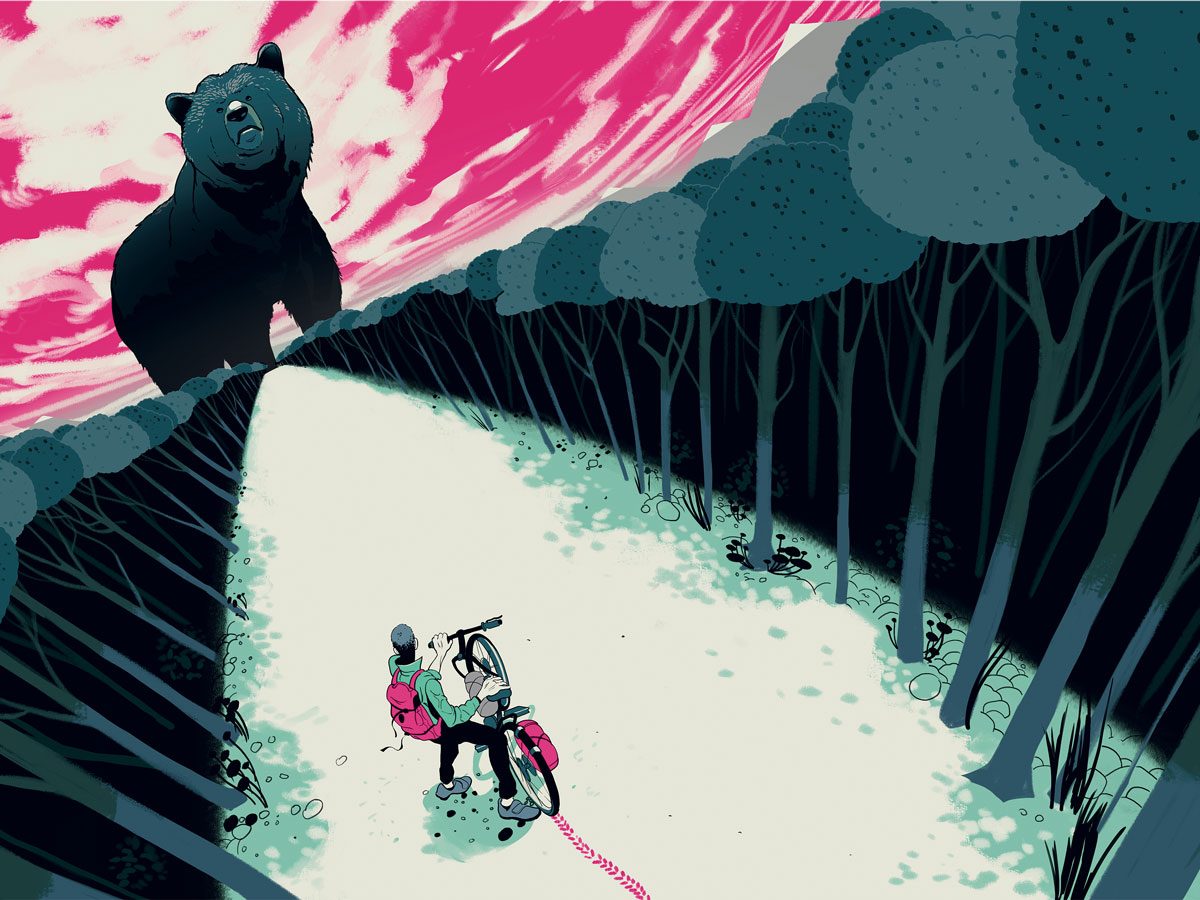
A Scream in the Wild
Ever since he was a kid growing up on Quadra Island, B.C., Colin Dowler pushed himself to do more, go faster and scale bigger heights, despite having a small physique and a nagging congenital knee disease. Jenifer, his wife of 16 years, often found herself telling him to slow down. When he skied, he raced the double-black diamond fanatics. When he rode his mountain bike, it was on the bumpiest terrain. If he wasn’t a little scared doing something, he didn’t think he was doing it right.
Last July, to celebrate his 45th birthday, he booked off a week from his job as a city facilities manager in Campbell River, B.C., where he lived with Jenifer and their two daughters. He also planned to spend two days on his own, scouting a route he’d eventually use to climb Mount Doogie Dowler with his older brother, Paul. The peak, standing around 2,000 metres in the Coast Mountains in southwestern B.C., was named after Dowler’s late grandfather. It had always been a point of pride for their family that Grandpa Doogie, a prominent community member who once owned the Heriot Bay Store and Post Office, a Quadra Island hub, was immortalized in nature. But none of the Dowlers had ever climbed to its summit. Colin tried once in his 20s and made it within a few hundred metres of the peak before getting rained out.
Jenifer didn’t like the sound of her husband’s latest plan. She was used to Dowler going on solo adventures, but this time he’d boat to an obscure bay, bike an unpopulated road, hike through grizzly country and camp overnight alone. There was too much room for disaster.
“If I’m not home by eight o’clock Monday evening, you should start to worry,” he said.
Jenifer laughed. It was practically her husband’s motto.
Technically, he said, she’d have to wait until the morning if she wanted search and rescue to take his disappearance seriously.
“So,” she said, “I should just sit all night worrying until I can call authorities and say my husband is missing.”
He shrugged. Pretty much.
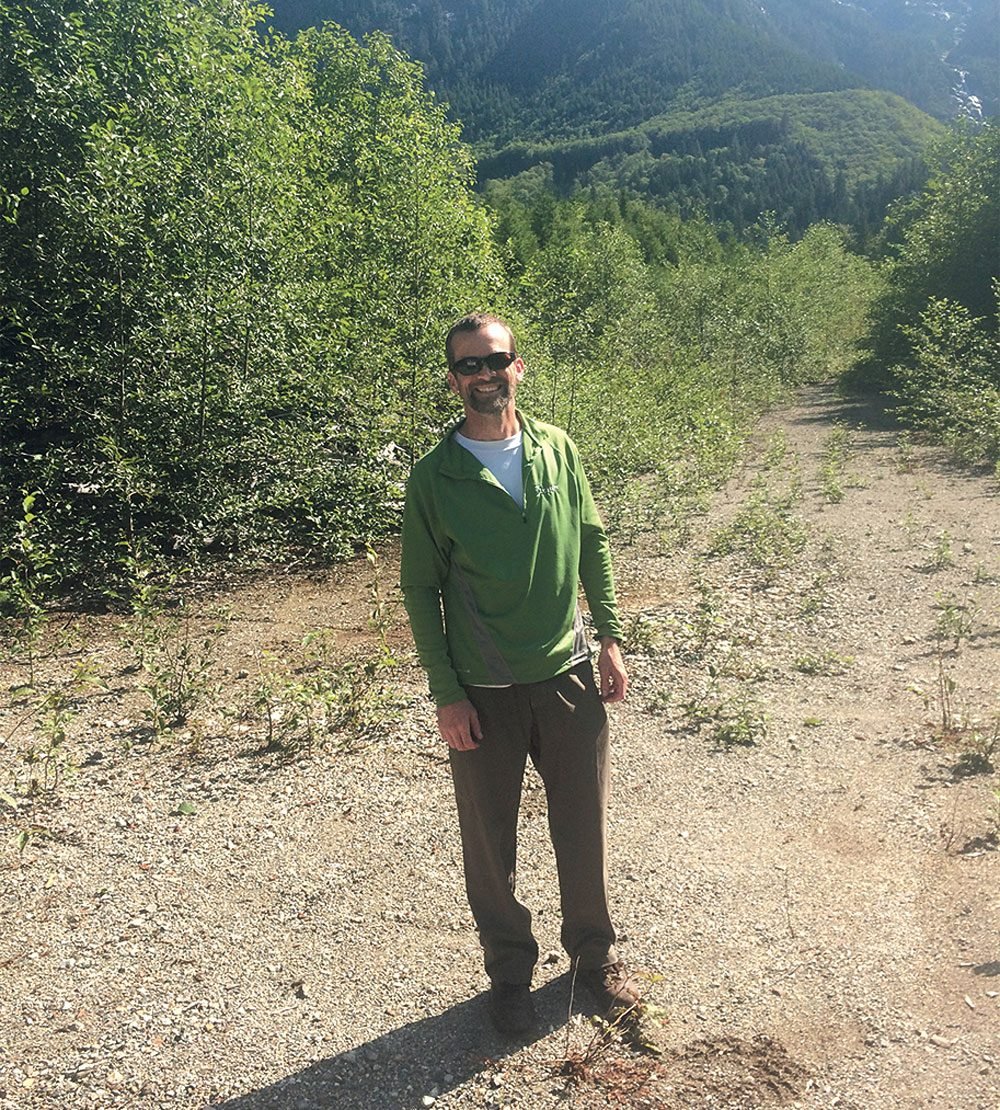
The night before his journey Dowler packed sparingly. He ditched his usual tent to experiment with a bivy sack—a person-sized portable shelter. He filled the remaining pockets of his bag with a handheld GPS, hiking poles, his homemade venison pepperoni and a few other essentials. Instead of his usual Swiss Army knife, he took a three-inch stainless steel pocket knife given to him by his dad, Norman.
Jenifer and their daughters were still in bed when Dowler left his home at 7 a.m., his bike and boat in tow.
The weather that day was nice, which meant the parking spots at the city’s boat launch would fill up fast. Dowler intended to stop at a tackle shop for bear spray, but as he added up the minutes, he drove past it, deciding the small likelihood of a bear attack wasn’t worth not completing his mission.
He recognized he couldn’t completely rule out the possibility, though. He’d had two grizzly sightings and countless black bear encounters on Quadra Island before. But he’d always escaped unscathed.
Dowler pulled into the Campbell River port and quickly set off in his motorboat. More than an hour later, he arrived at Ramsay Arm, an inlet on the mainland, and found a spot to tie the vessel near a logging camp.
As a former worker in the logging industry, Dowler knew it was good practice to check in at the mess hall. “Is there anything you need?” Vito Giannandrea, the camp cook asked him.
“Bear spray,” said Dowler.
After finding a can, Giannandrea offered him a ride. They trucked along an overgrown logging road until the forest got too thick. As Dowler leaned his mountain bike against a bush to retrieve on the way back, Giannandrea took a picture of him with his phone. “So we have something to put on the milk cartons if you don’t come home,” he joked.
With Giannandrea’s bear mace in one pocket and the knife from his dad in the other, Dowler started hiking. After traversing steep terrain and thick forest for about an hour, he started marking his trail with blue ribbons. He made lots of noise to ward off any curious creatures. Near the end of the day, he realized the canister of mace was gone. It must have slipped out of his pocket while he rested during a navigation stop.
Dowler didn’t want to risk getting caught in the dark looking for the spray. Instead, he spent an hour searching for a place to camp, eventually settling on a flat, dry surface with branches low enough to set up his bivy sack. He strung his food and clothes high up in a nearby tree, and crawled into the bivy by 9:30 p.m., satisfied with what he’d accomplished that day.
The next morning, Dowler tried without luck to locate the spray on his way down the mountain. He gave up by the time he recovered his bike, then carried on, pedalling and daydreaming about getting home early to enjoy some family time and a beer or two.
As he passed a seven-kilometre marker for camp-bound logging trucks, he came around a bend and suddenly clenched his brakes—a mangy grizzly stood in the middle of the narrow road, 30 metres away. Dowler paused on his bike, calculating his chances of turning around for a quick escape. The bear could easily tackle him by the time he picked up speed. He opted to try to scare the bear away. “Hey bear,” he bellowed.
It didn’t work. The animal looked from him to the bush, back and forth, and then began heading in his direction. Dowler flung his backpack off his shoulders, snatched a hiking pole and extended it in front of him. As the bear approached, he started to make out its features. The boar, about five years old, and nine feet from tail to snout, was nearly three times his body weight—and though it showed no signs of aggression, its curiosity was piqued.
The bear walked along the opposite side of the road, coming closer and closer. The gap between them closed to 10 metres. Dowler carefully stepped off his bike, which seemed to startle the animal. It shuddered from the paws up to its rump, then continued to stalk nearer. Dowler pivoted his bike, shielding himself with it. The bear passed by Dowler. Then, suddenly, it stopped, turned and looked right at him.
Dowler calmly raised a hiking pole and pushed it against the bear’s big forehead, right between the eyes. This seemed to hold the bear in place, until the rubber tip rolled off his muzzle. Before Dowler could try again, the bear chomped on the pole. “Oh, come on now, we don’t need to do this,” he said, careful not to react aggressively with the animal so close. “I’m your friend.”
Dowler let the pole drop. He tossed his backpack beside the bear, hoping the pepperoni scent would entice him away. One sniff, and the bear turned back with his paw in the air, then delivered a light swat that Dowler blocked with his bike. Dowler dodged a second, heavier swat, and another and another, each stronger than the last.
After the bear raised a threatening paw high in the air, Dowler threw the bike at it, but the creature barely stumbled. Instead, it lunged forward and snatched Dowler up by his abdomen with one swift chomp. Dowler was flung sideways, draped across the bear’s muzzle. The animal’s canines sank deep as it carried him to the edge of the road. Dowler felt no pain, just warmth. He didn’t resist, thinking only that if it carried him into the bush, he’d be too incapacitated to get back to the road and would die before anyone found him.
The grizzly dropped him by the ditch and lifted its head for another bite. There was no roar, no growl, just huffing while it chewed Dowler’s flank. Dowler tried to gouge its eyes—grabbing at the fur on its face and poking as hard as he could into the bear’s left eye. Agitated, the bear swung him 180 degrees, hoisted itself high, and chewed into his upper leg. Over and over, the bear lifted his head and bit into him.
Thoughts of leaving behind his family, of missing every part of his daughters’ lives, raced through Dowler’s mind. He regretted that he’d put himself in such a dangerous position—that he’d lost the bear spray.
As he tried to pry the animal’s jaws open, saliva trailed off its yellow teeth. It chomped through his hand. “Stop!” he screamed. “Why? Stop!” It didn’t make sense. He knew that grizzlies typically only attack briefly, then leave humans alone. When would this end?
The bear moved on to taste his other leg. As he heard the sound of his femur grating in its teeth, he remembered his knife in his pocket. He reached for it, just as the grizzly hit a nerve. Dowler arched and yelped.
Okay, he thought, I’ll play dead.
But the bear hit another leg nerve and Dowler screamed even louder. I can’t play dead while I’m screaming. I have to get the knife.
The weight of the grizzly’s chest was on his stomach, pinning his arms to his left side, opposite the knife. Unable to feel his right arm, Dowler wiggled his left hand between their bodies and into his pocket. He opened the blade with both hands and inadvertently sliced the bear’s chest as he pulled his left arm out.
Dowler stabbed the bear’s neck as fast and strong as he could. Blood gushed from the wound. Even the grizzly seemed surprised.
“Now you’re bleeding too, bear,” said Dowler.
The bear stepped off him and walked slowly away, trailing blood on the gravel. As it disappeared into the forest, Dowler assessed the damage to his body. His sides and legs were riddled with cavities. A femoral artery wound drenched his lower half in blood. Dowler cut his left shirt sleeve with his knife and tied it around his left leg. Once it was tightly knotted, he flopped on to his backside and scooted to his bike, then pulled himself onto it and concentrated on resting his feet on the pedals. He collapsed off the bike after one push.
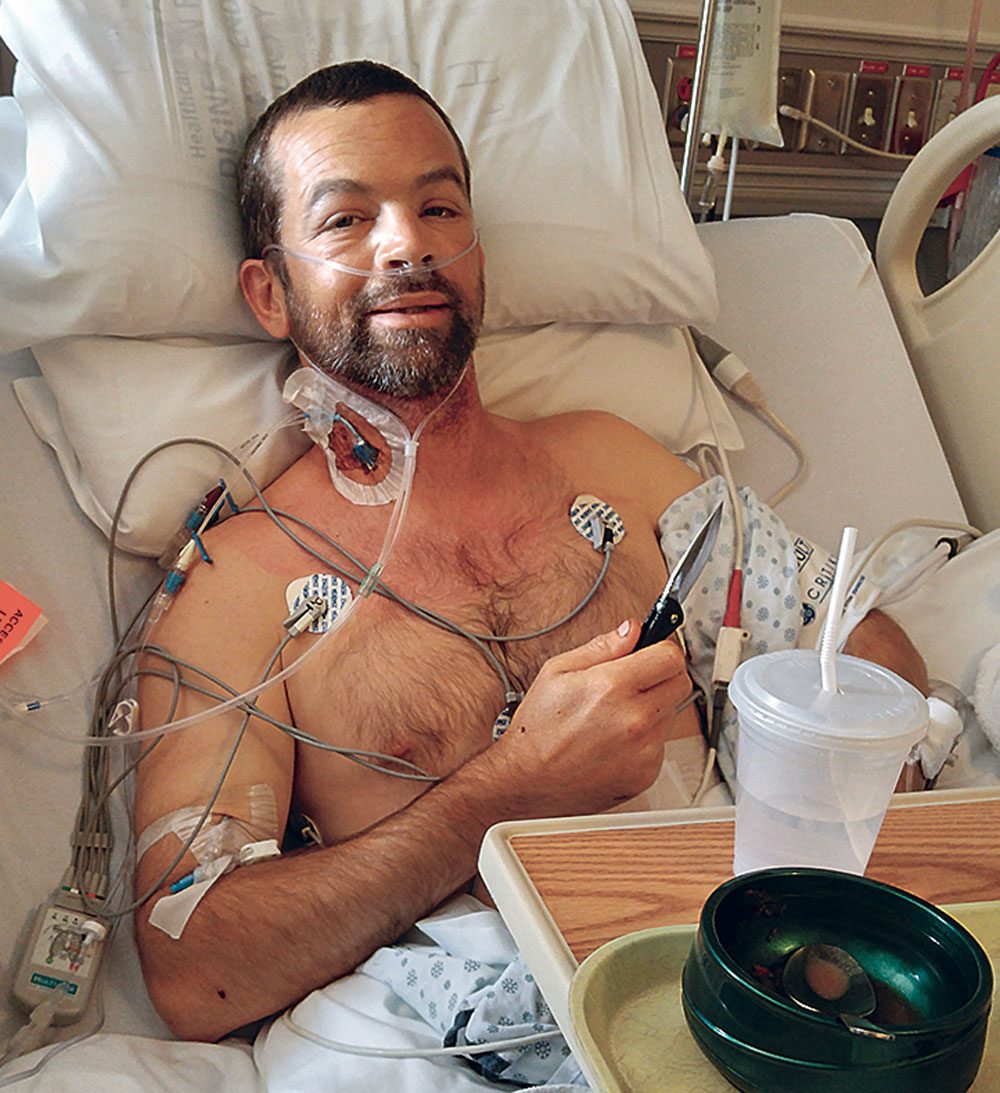
Dowler fought to remount and take off, keeping a tight grip on his knife. He felt his seat warming as blood from his wounds flowed down his back. As he focused on his breathing, he felt his odds improve.
He pushed ahead for 30 minutes until the road sloped toward the logging camp. He bounced over the bumps, all the way to the mess hall railing and fell on his side.
Dowler flung himself onto the landing, legs flopping on the stairs. “Help! Call a helicopter. I’ve been mauled by a grizzly,” he yelled through a screen door. Five men, including Giannandrea, found Dowler streaked with blood and dirt, smelling like an animal.
They kept him talking for 40 minutes until a medevac finally arrived. He received two units of blood at the camp, and was eventually airlifted to Vancouver General. His younger brother, his cousin and his sister were already waiting for him at the hospital. But Jenifer, still on a camping trip, was unreachable.
It was evening when Jenifer returned home. They’d gone a day without reception and hadn’t turned their phones back on. “Look, it’s almost eight o’clock,” said Jenifer, driving into her neighbourhood. “It’s almost time to start worrying.”
Their house came into view and she immediately noticed her brother-in-law’s truck in the driveway instead of Dowler’s. She saw him pacing outside on a call.
He hurried over. “I don’t want you to panic,” he said. “He’s stable, but Colin was attacked by a grizzly bear.”
At first Jenifer thought it had to be a joke, and expected her husband to jump out from behind a tree.
It was too late for Jenifer to catch the last ferry to the mainland. She finally arrived at the hospital late Tuesday morning, just as Dowler woke up from six and a half hours of surgery. They’d had to make an eight-inch incision to repair an artery wound, and treat more than 50 gashes and bite wounds. In all, he needed close to 200 staples and stitches. He was groggy, equally confused by the sight of his family and all his bandaged limbs.
The news was as good as it could be. The grizzly’s teeth had mostly bounced off his hips and ribs. Had Dowler been any larger, there’d have been more room for the bear to sink its teeth into his internal organs.
In the end, the physique he’d tried to defy all his life had saved him.
In the mood for more heart-stopping survival stories? Check out these other true tales from our Drama in Real Life section.
Check out this clever humidifier hack!
We all know how the air can get super dry during those cold, winter months. Dry air can affect everything from your skin, eyes, throat, hair, lips, seasonal allergies and illnesses. Keeping a humidifier in your home is an easy way to solve the dry air issue at home, but what if you don’t have a humidifier at home? Well, you can just use your slow cooker.
Yes, it’s true! A slow cooker can actually serve as a humidifier in your home, and it’s extremely easy to do. So if you have a slow cooker and you’re looking for some fresh air in your home this winter, here’s what to do:
Step one: Fill it with water, set it on “high”
First, place the slow cooker in a spot that you would like to have fresh air. Since the living room is probably a gathering place in your home, find a place for the crockpot in there. Fill up the crockpot with fresh water and cover it with the lid. Set the slow cooker on high.
Step two: Take off the lid, set it to “low”
When steam starts to roll off the lid from the slow cooker, you know that it’s ready. Take the lid off of the crockpot and turn it on low. Let the moisture from the water work its magic!
Step three: Fill the water if necessary
If the water is starting to get low in the slow cooker, top it off with more water. If the water isn’t warm enough, you can always throw the lid back on it to heat it up.
Step four: If desired, add essential oils
If you’re looking to add some fresh smells in your home, adding drops of essential oils will be a nice touch. Different essential oils are known to have different purposes. If you’re looking to clear up sinuses, for example, use eucalyptus. If you’re looking for calm, try some lavender. If you’re looking for cozy and seasonal, add some orange and even throw in some cinnamon sticks!
Next, check out these 24 simple home hacks to save money.
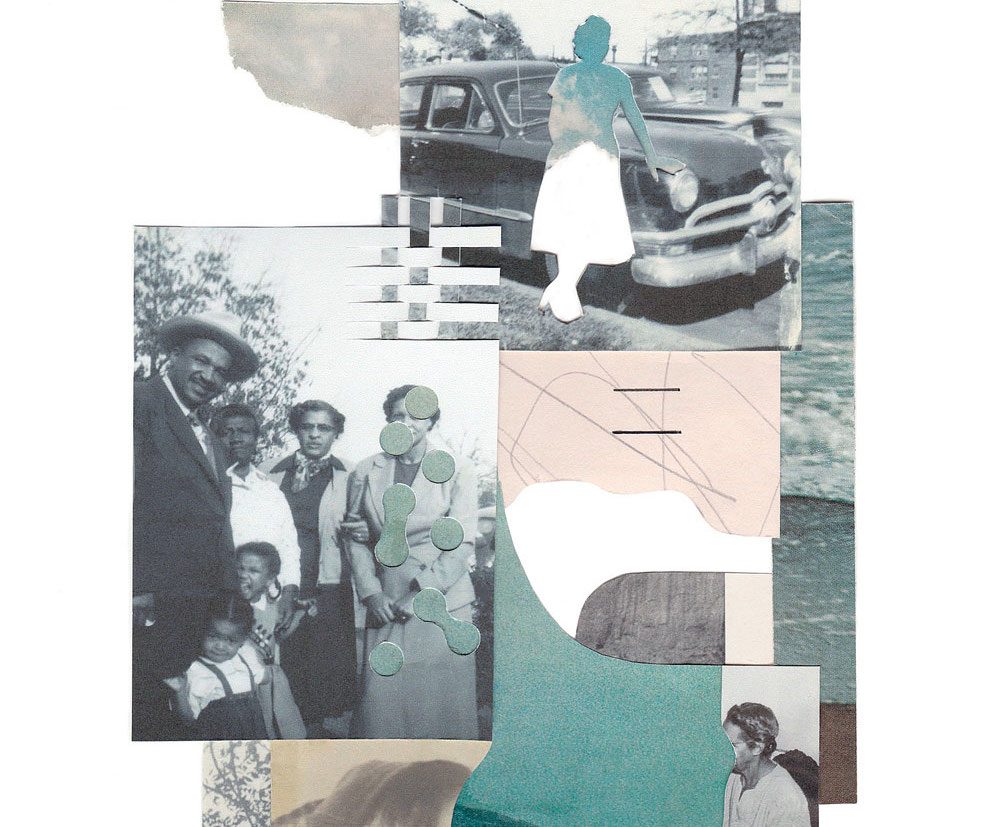
Early questions
As my children, Ben and Kate, have grown up, I’ve been struck—and sometimes saddened and alarmed, as so many parents are—by their struggles to come to terms with death. I knew abstractly that an appreciation of death would dawn on them at some point, but I hadn’t remotely expected the process would be so explicit and heart-rending.
At around four or five years of age, a child starts to grasp, dimly at first, that death involves a kind of imponderable loss, that this loss is final and that loved ones—mothers, fathers, grandparents—will eventually die. In our family, the process has involved, indeed it still involves, age-appropriate, frank conversations with our children; and I’ve learned that the process through which children recognize and accept death’s reality is enormously traumatic and that their emerging world views play a critical role in how they manage this trauma.
Ben asked his first explicit question about death when he was five and a half. He was having a bath, and, with soapsuds up to his chin, he paused his splashing and asked my wife, Sarah—completely out of the blue—what happens after someone dies.
While Sarah and I have our individual convictions, we don’t presume to have the final answers to such questions. So she replied that some folks think that people go to heaven when they die, while others think they’re reborn as another person, animal or plant, while still others think nothing happens at all—that death is simply the end of life. Ben wasn’t happy with the last option. “I think they go to heaven,” he said firmly. Sarah offered that he might be right.
She told me about the conversation later, and we didn’t think about it further. But the next day, on a piece of blue construction paper, Ben sketched a little boy dressed in an orange shirt and green pants. The boy’s face was in profile, so he faced sideways across the sheet of paper. From a jagged, black slash representing the boy’s mouth emerged a speech bubble containing the words “MUM DAD” in big, bold letters.
Sarah asked Ben what the picture represented. “This is me in heaven, Mum. It’s blue paper because heaven is in the sky. And I’m shouting for you and Dad because I’m lost.”
Our daughter, Kate, started to ponder death a little earlier in her life. Her perplexity and discomfort revealed themselves differently than they did with Ben. She started to ask the question “Will it die?” about things around her, both animate and inanimate—about trees, worms, rocks and toads. Still, I remained largely unaware of her emerging concern about death until one morning when she was upset because something wasn’t going quite her way. I put her on my knee and held her close: “Sometimes you can’t get what you want,” I said. “That’s part of what you learn as you grow up.”
“But I don’t want to grow up,” she replied adamantly.
“Why?”
“Because then I’ll have to die.”
This was one of those moments—not uncommon as a parent—when one is at a loss for words. Kate’s logic seemed unchallengeable: if she stayed a child, she could ignore the possibility of death.
I’ve found our children’s struggles with the idea of death acutely poignant but also enlightening: they’ve helped me see that fear of death is one of our most powerful motivators. We work hard to manage this fear and, in the process, often accomplish extraordinary things, many wonderful, yet some dreadful.
I think we fear death for five main reasons. Most obviously, we fear the physical discomfort and pain that often accompany dying. People will sometimes say that they’re afraid of dying but not so much of death. I agree that we’re afraid of dying, but I’m sure almost all of us are frightened of death, too, whether we admit it or not.
We’re frightened partly because we don’t want to be separated from our friends and loved ones, especially from loved ones who depend on us. More metaphysically, we’re frightened because death tells us we’re transient and ephemeral; if we don’t believe in an afterlife or a soul, then we likely believe that death will erase our consciousness—the very seat of our sense of self. Also, we fear that death will render our existence meaningless—that after all the turmoil of our lives, they’ll have had, in the grand scheme of things, no reason, point or purpose. We may even be forgotten, or at least not remembered in the way we’d like.
And we’re frightened, perhaps most importantly, because death is unfathomable, and unfathomable things are usually scary. Absent a spiritual doctrine that specifically explains it, death remains one of the deepest, darkest unknowns of life. It’s the ultimate, final edge between the known and unknown.
Considering death’s emotional and metaphysical import, we give it remarkably little conscious thought. In wealthy societies, we can easily avoid thinking about death until a certain age because it’s mainly hidden away in hospitals and old-age homes. As we get into our 50s and 60s, we might ponder it a bit more because friends start to die, as well as parents and older relatives, and because the remaining years suddenly seem so few. Still, we’re largely unaware that we’re always managing at one level or another the anxiety the prospect of death causes us.
Immortality Projects
Virtually all living things have a deep and ineradicable drive to survive. For early humans, the tension between that drive and the emerging awareness of eventual annihilation produced a focal anxiety. Realization that death can occur—randomly and uncontrollably—at any moment made this anxiety even worse. Today it remains an intrinsic, though often subconscious, feature of our modern minds; and if we don’t mitigate it in some way, it can overwhelm and paralyze us.
Of course, human beings have many motivations, and different circumstances can trigger different motivations in various combinations. But the need to cope with the fear of death is common to almost all of us, and powerful. So we tell ourselves stories about who we are and how we should act that help us believe we can heroically transcend death.
Such “hero stories” are infinite in their variety. We might, for instance, weave our concept of our self into a story about someone or something we see as noble, powerful and enduring. In this kind of story, we could be a devotee of a god, a follower of a charismatic leader, a member of an ethnic group or nation, or even a fan of a notable sports team. Or we might instead tell a story in which we play the role of hero directly. Here we could be raising a child, founding a company, fighting a war, discovering a new scientific fact, constructing a building, writing a book, leading a community group, saving the world—or perhaps just being a terrific employee or friend.
Whatever our hero story’s content, though, it helps us believe that we’re involved in an “immortality project,” to use the cultural anthropologist Ernest Becker’s term: we foster literal immortality via the heavens, souls and afterlives central to most religions or allow a symbolic part of ourselves to persist beyond our physical death in something like a child, company, building, book, ethnic group, nation or a friend’s memories. We hope and believe, Becker writes, that the things we create are of such “lasting worth and meaning” that they “outlive or outshine death and decay.”
So far, so good. But we can’t create these hero stories and immortality projects out of thin air. To be compelling—not just to ourselves but especially to the people who matter to us—they must connect with our surrounding culture. In other words, our hero stories need to make sense within the common world view that we share with members of our group or community, whether it’s a neighbourhood association, sports club, political party, business or nation. A group’s world view always includes a rich conception of “we,” especially regarding why the group exists and its history; it also usually includes ideas about what counts as virtuous behaviour and as fairness and justice in members’ dealings with each other.
Here’s the key point: when each of us wants to figure out what life projects will help our individual selves endure, literally or symbolically, we look to what’s meaningful and valuable within the groups we’re members of and that matter to us. And to find out what’s meaningful and valuable, we use as reference points these groups’ shared beliefs about identity, good behaviour, fairness and justice. We seek to be heroes according to their codes; doing so gives us a sense of purpose and lessens our fear of transience.
Religion, of course, often serves this purpose. Regardless of the truth of any specific religious world view, one of religion’s psychological functions—perhaps its central function—is to alleviate its adherents’ anxiety about death. The stories religions tell give their believers’ lives meaning, make those believers’ eventual deaths appear understandable and often promise immortality through an enduring soul or spirit.
More generally, and maybe a bit cynically, one might say that we’ve learned to manage anxiety about death by developing a prodigious capacity for denial. Some scholars even argue that denial of death is the secret of our species’ evolutionary success. Once we evolved this cognitive ability, or at least the ability to keep death anxiety at bay, we could deploy our intelligence to further our survival and propagation—and eventually to dominate the planet—without suffering the paralyzing anxiety that this intelligence would otherwise have caused us.
As we try to craft an idea of an honest and astute hope in an increasingly dangerous world, we must recognize that the tension between our awareness of our certain death and our drive to survive is an immutable feature of our condition. It’s one of those pitiless, inescapable aspects of our reality that we must accept and learn to work with. Death anxiety pushes its way into our consciousness when we’re children, and it remains with us through our lives, although we do our best to bury it underneath our daily busyness. Some of us may “sublimate” it, as psychologists say, into a drive to do something exceptional or even noble. But even if we don’t or can’t, for our mental and social health, each of us still needs a hero story and immortality project, and our projects and stories must make sense within the shared world views of the groups that matter to us.
Each Other’s Villain
At the age of six, Ben came across an article about how vast numbers of sharks are killed each year to get their fins for soup. Incensed, he drew a picture of a little submarine that could roam the oceans and cut the shark fishers’ lines. In doing so, he was writing the first lines of a hero story. It drew on our family’s larger world view, with its keen awareness of nature, and on what seemed to be his innate moral impulses to prevent suffering and promote fairness. It gave him a purpose that addressed the problem at hand, and in doing so may have also alleviated some of his emerging death anxiety.
Over the next years, as Ben grew into a thoughtful boy, his stories became more detailed and emotionally variegated. By age nine, he wanted to be an oceanographer—and to find Atlantis. His stories will continue to change as he gets older; it takes experimentation to find one that works, and we continually revise them as our lives evolve.
The hero stories we tell ourselves as adults are far more elaborate than those of children because they must connect with the more elaborate network of concepts, beliefs and values that make up our adult world views and the world views of the groups we’re part of. They’re also usually far less grandiose and narcissistic because they must make sense in the context of hard realities—Atlantis, after all, doesn’t exist—and because other members of our community generally find narcissism offensive. And, lastly, they’re far less accessible to us in our everyday thoughts, because we feel a bit foolish when we think of ourselves as heroes and somehow immortal.
But the stories are still there, deep down. My story seems to be about being a good father, husband, teacher and member of my community—yes—but also about reducing conflict in the world, calling out greed, selfishness and recklessness, and protecting nature from human avarice and folly. These commitments are partly derived from the ideas of justice that I share with the liberal and progressive groups in Canadian society that I feel I’m part of.
In my writing, public commentary and speeches, I regularly engage in conversation with climate “contrarians” who reject mainstream climate science almost entirely. Sometimes when I speak to an audience of folks in the fossil-fuel industry, they cross their arms the moment I mention the scientific consensus on the subject. Through these conversations, I’ve come to understand that these folks have their own hero stories. They, too, are members of families and communities—teachers, farmers, line workers, business people and others who sincerely believe their hard work and enterprise are meeting people’s needs and solving society’s problems.
For those who work in the fossil-fuel industry, in places like the oil sands in northern Alberta (people I know to some extent from my years working in the oil patch), digging up bitumen gunk and converting it into fuel for our cars isn’t a hideous despoliation of nature but an exciting and noble expression of human will, exuberance and self-determination. Many see themselves as challenging raw nature at the frontier of the Canadian wilderness and turning it into something enormously useful for everyday people. Key elements of their hero stories are moral commitments to personal freedom and responsibility and to the right to keep the fruits of one’s ingenuity and effort—commitments partly derived from the notions of fairness and justice shared with their own (usually more conservative) groups in Canadian society.
When I pop up in their lives and start talking about climate change, they see someone representative of larger forces that could take away the fruits of their enterprise and limit their freedom. In their minds, I’m suggesting that government should steal their wealth and bind them in a web of rules and regulations because it’s hard to imagine any meaningful response to climate change that doesn’t involve bigger and more intrusive government—not just national government, but global government, too. So I’m threatening to cut the heart out of their hero stories, the stories that protect them from the universal, omnipresent and potentially overpowering fear of death and meaninglessness.
The commonly proposed solutions to climate change represent just about everything they dread most: constraint, impoverishment and subservience—perhaps even subservience to foreigners. No wonder they get angry, and no wonder they’re willing to do anything necessary—including dismissing clear scientific evidence as nonsense and even declaring scientists to be liars—to defend themselves, their world views and everything those world views mean to them.
On my side, when my interlocutors dismiss scientific fact and attack scientists, they threaten to cut the heart out of my own hero story, as I fight greed and recklessness to protect a planet I fear will die. I’m then inclined to see their moral commitments to personal freedom, private property and the right to self-betterment as nothing more than a cover for rank selfishness—and for pillaging nature while the pillaging is good. Their expression of these commitments, by this view, simply confirms that they’re reprehensible.
That’s the essence of the mirror image: each side plays the villain in the other’s hero story. Those villains and our individual ideas of justice make our heroism possible; we all see ourselves—we must see ourselves—as struggling for the good against the bad, even if we don’t consciously admit it. And this kind of self-perception appears all the way up and down the socio-economic and power hierarchy on each side of the dispute, from workers angered by the burden of carbon taxes to middle-class folks arguing about climate change around a dinner table and on to American billionaires—such as Tom Steyer and Charles Koch—duking it out over climate policy by supporting opposing politicians in U.S. congressional races.
So we go around in cycles of attack and counterattack, and the debate becomes increasingly antagonistic and polarized while climate change itself isn’t effectively addressed.
Sensing this underlying psychological dynamic at work, some prominent commentators and academics have declared a “pox on both your houses.” They’ve concluded that the truth about climate change must lie somewhere in the middle. The problem, they say, is neither as bad as the advocates for climate action claim nor as irrelevant as the contrarians assume.
But that’s an error in logic. Just because each side exhibits roughly equal self-righteous fervour doesn’t mean each must be equally wrong about climate change. The social psychodrama surrounding climate change tells us a lot about what makes us tick but next to nothing about the underlying problem in dispute.
To learn about that, we need science, and the science says the advocates for bold action are almost certainly right: climate change is a monumental threat to humanity’s future.
Getting Beyond Fear
The mood shift that much of humanity has experienced in the last two decades—from excitement about the future’s boundless possibility to deep pessimism about worsening insecurity and diminishing opportunity—still seems to be underway; it may even be gaining momentum in the wake of the COVID-19 pandemic. This shift is occurring, I’m convinced, because many of us, indeed perhaps most of us now, are increasingly afraid. And we’re increasingly afraid largely because we can’t reconcile the profound and rapid changes we sense are happening around us with the assumptions about social order, fairness, opportunity and identity that often remain at the core of our world views.
A problem like climate change is deeply contentious, not just because of its complexity and likely severe consequences for people and societies down the road but also because we know that if it’s really happening, any meaningful response will implicate every facet of our lives and almost inevitably challenge some of our central world-view commitments, whether they be (for those on the ideological right) commitments to limited government regulation and the unrestricted right to acquire wealth or (for those on the ideological left) commitments to local, small-scale food and energy production and even to social equality and democracy, both of which will likely be ever harder to sustain as the climate crisis worsens.
Our world views connect us with our communities, stabilize our sense of who we are as individuals and groups through time, anchor our visions of a desirable and hopeful future and, not least, provide the raw materials for our personal hero stories. So we’re terrified when they’re threatened and often come passionately and sometimes even blindly to their defence.
Quite understandably, some of us transform our fear into anger. Worse, rather than acknowledging that “the enemy is (partly) us” to explain the many disruptive changes we’re experiencing, some of us create in our minds an external, personified enemy—an analogue of Sauron in The Lord of the Rings, under labels like environmentalist or capitalist, white or brown, or Christian or Muslim—whom we can blame for the disruptions and portray as our villains in new, angry hero stories.
In the end, though, as we all essentially know, such embittered reactions only make us more afraid and more divided—and collectively less able to solve our common problems. We need instead world views that are complementary enough to unite us around an immortality project for our entire species as we work to stop, and then reverse, the rapid deterioration of our planet’s vital natural systems—world views that help us surmount fear by inspiring, rather than extinguishing, the hope that motivates our agency.
Humanity may have barely a decade or two to shift its dominant world views in such positive directions. To act so fast, we must understand better what’s going on in our own world views and those of other people and groups. Then we’ll see better who might be our natural allies, who might be persuaded to become our allies and who’s likely to oppose us implacably in the coming social and political battles for a better future.
Next, discover how traditional tips can help us mourn in the modern era.
Excerpted from Commanding Hope by Thomas Homer-Dixon. Copyright © 2020 Resource & Conflict Analysis Inc. Published by Alfred A. Knopf Canada, a division of Penguin Random House Canada Limited. Reproduced by arrangement with the Publisher. All rights reserved.
